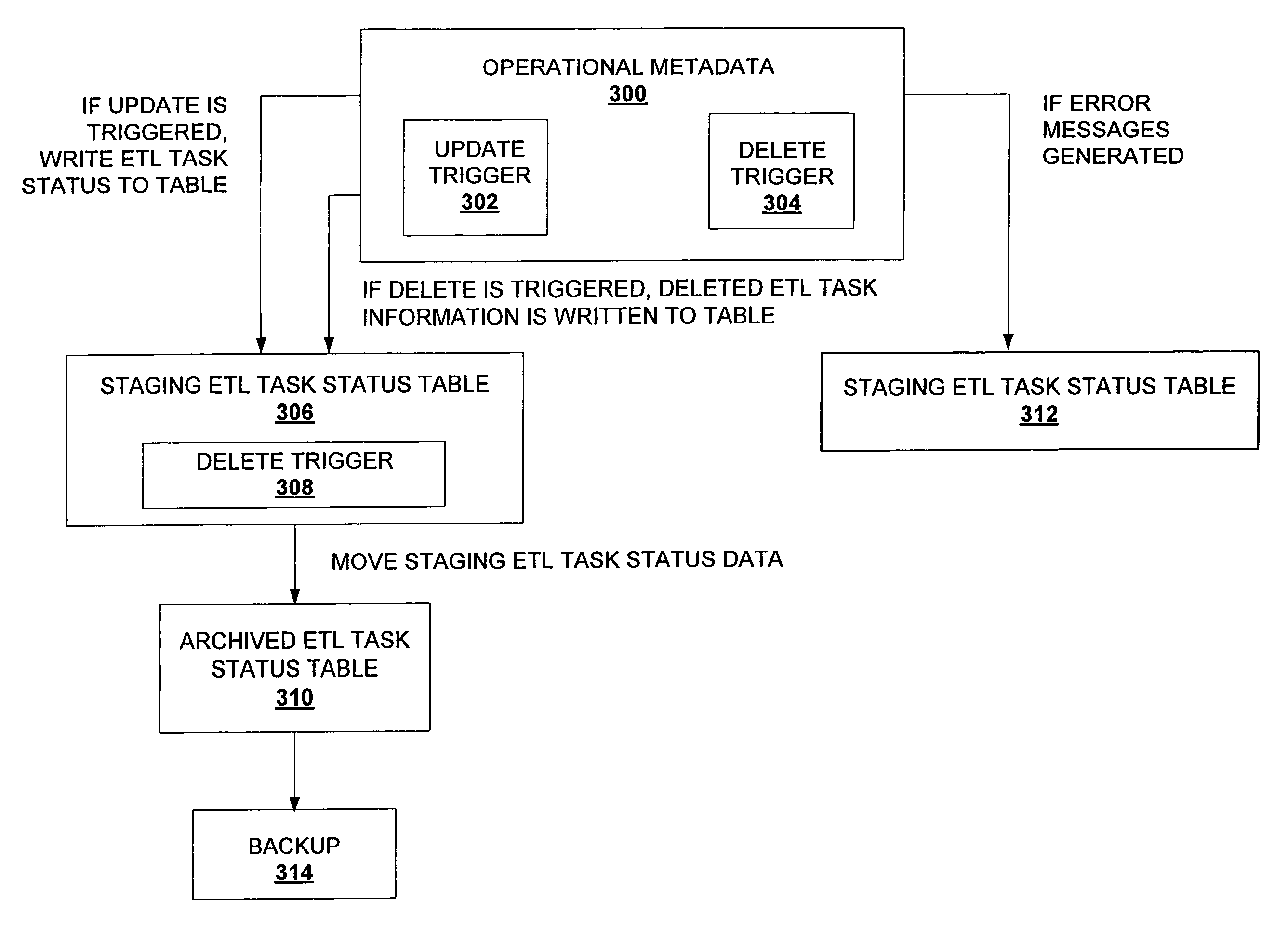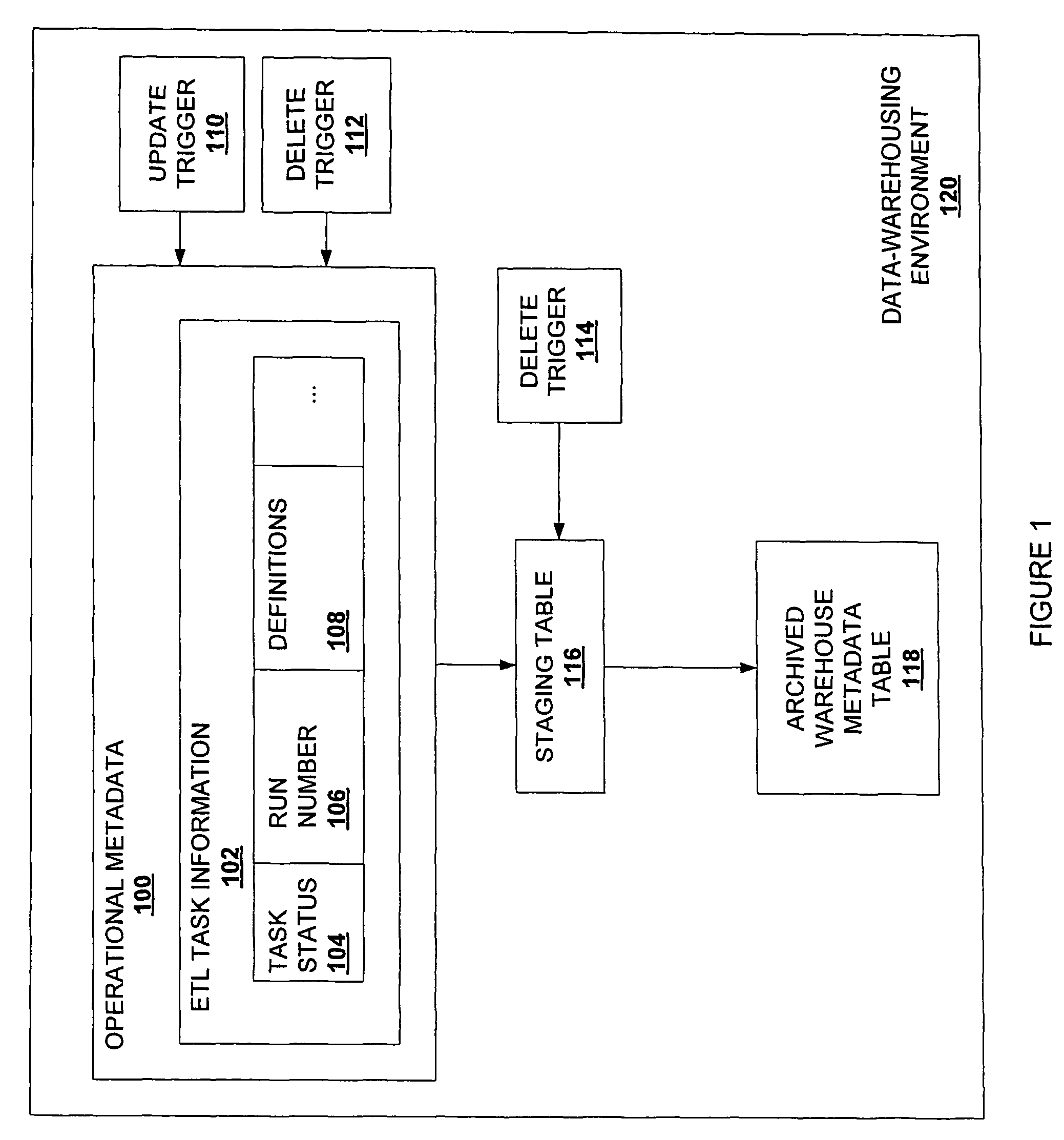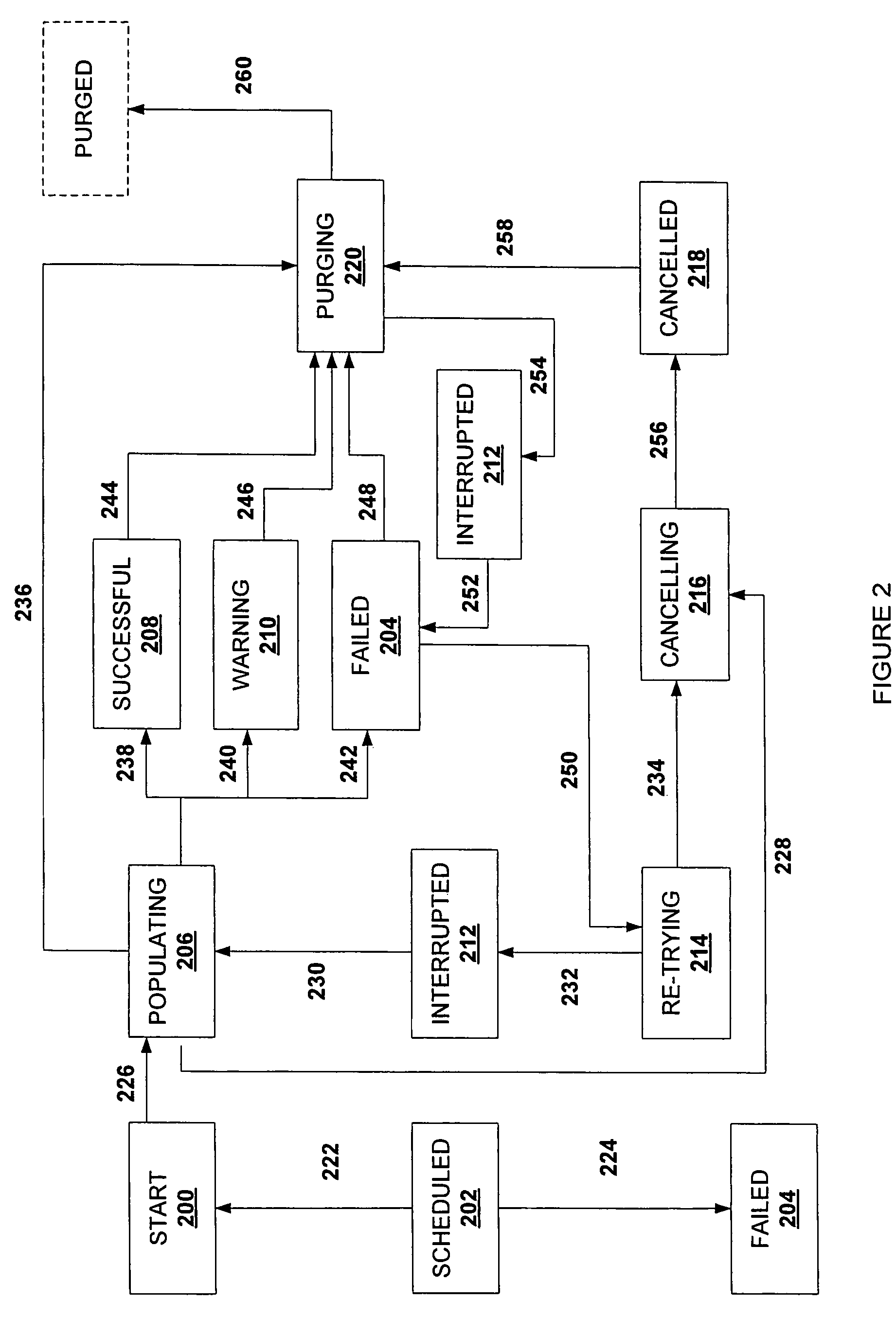Dynamically capturing data warehouse population activities for analysis, archival, and mining
a data warehouse and activity technology, applied in the field of database archival, can solve the problems of increasing the administrative load required to maintain and control warehouse metadata, affecting the performance of etl tasks, and not being persistent in the status of etl tasks in a typical data-warehousing environmen
- Summary
- Abstract
- Description
- Claims
- Application Information
AI Technical Summary
Benefits of technology
Problems solved by technology
Method used
Image
Examples
Embodiment Construction
[0019]While this invention is illustrated and described in a preferred embodiment, the invention may be produced in many different configurations. There is depicted in the drawings, and will herein be described in detail, a preferred embodiment of the invention, with the understanding that the present disclosure is to be considered as an exemplification of the principles of the invention and the associated functional specifications for its construction and is not intended to limit the invention to the embodiment illustrated. Those skilled in the art will envision many other possible variations within the scope of the present invention.
[0020]FIG. 1 illustrates a general system diagram of the present invention comprised of operational metadata 100, trigger mechanisms 110, 112, 114, staging table 116, and archived warehouse metadata table 118 in data-warehousing environment 120. Operational metadata 100 is comprised of ETL information 102. ETL information 102 further comprises ETL task...
PUM
 Login to View More
Login to View More Abstract
Description
Claims
Application Information
 Login to View More
Login to View More - R&D
- Intellectual Property
- Life Sciences
- Materials
- Tech Scout
- Unparalleled Data Quality
- Higher Quality Content
- 60% Fewer Hallucinations
Browse by: Latest US Patents, China's latest patents, Technical Efficacy Thesaurus, Application Domain, Technology Topic, Popular Technical Reports.
© 2025 PatSnap. All rights reserved.Legal|Privacy policy|Modern Slavery Act Transparency Statement|Sitemap|About US| Contact US: help@patsnap.com



